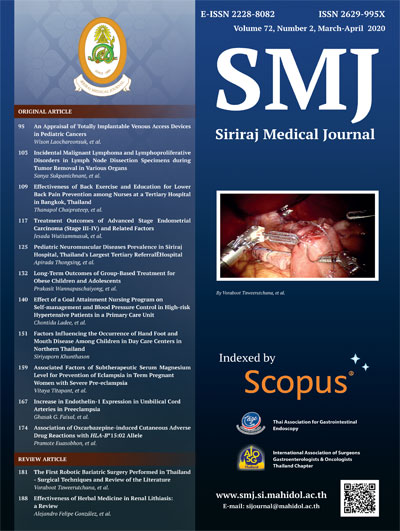Increase in endothelin-1 expression in umbilical cord vessels in preeclampsia
Keywords:
Endothelin1, Preeclampsia, pregnancy, umbilical cord.Abstract
INTRODUCTION: Endothelin1 (ET1) is 21- amino acid vasoconstrictor peptide secreted by endotheliumwhich has an important role in the pathoohysiology of preeclampsia (PE). The objective of this study was to evaluate the binding sites and quantitative changes in ET1 in umbilical cord vessels of PE patients. METHOD: This study recruited 40 pregnant women between 20-40 years old at 3rd trimester. All cases selected for this study underwent an elective cesarean section, grouped into 2 groups; PE group of 20 pregnant women (at 3rd trimester) who proved to have pregnancy induced hypertension and proteinuria. The control group was of 20 healthy pregnant females at the same average of gestational age and with the same exclusion criteria and no PE, underwent elective caesarean section. Umbilical cord tissues were taken from the maternal side, fixed with formalin, paraffin, embedded sections of umbilical cord were treated with Endothelin1 antibody. The immunoreactivity of ET1 was assessed using Aperio image scope software. Statistical analysis was done using SPSS program. RESULTS: The results demonstrated a significant increase (P = 0.001) of ET1 expression in cord vessels of PE group with respect to control group (mean 28.5±1.7, 2.6±0.4 respectively). CONCLUSION: It is concluded that ET1 is markedly increase in PE and may be the cause behind promoted vascular smooth muscle cell contraction and blood pressure elevation in PE.
Published
How to Cite
Issue
Section
License
Authors who publish with this journal agree to the following conditions:
Copyright Transfer
In submitting a manuscript, the authors acknowledge that the work will become the copyrighted property of Siriraj Medical Journal upon publication.
License
Articles are licensed under a Creative Commons Attribution-NonCommercial-NoDerivatives 4.0 International License (CC BY-NC-ND 4.0). This license allows for the sharing of the work for non-commercial purposes with proper attribution to the authors and the journal. However, it does not permit modifications or the creation of derivative works.
Sharing and Access
Authors are encouraged to share their article on their personal or institutional websites and through other non-commercial platforms. Doing so can increase readership and citations.











